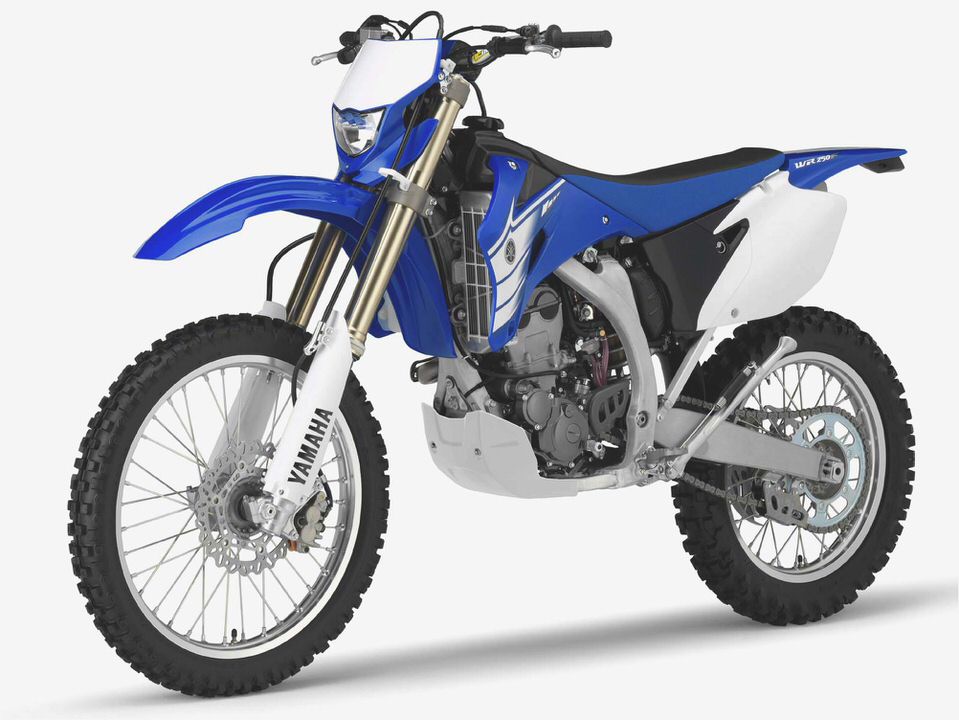
2004 Yamaha WR250F – WR450F – Dirt Rider Magazine
Tuesday, February 24, 2009
How much is the magic button worth on an off-road bike? According to Yamaha, adding the electric start and updating the WR line to match current YZ styling and bodywork in 2003 doubled the number of units sold! For the record, we aren’t talking about bikes that are hard to kickstart–both models kickstart easily and reliably–but even die-hard racers admit that having the button is very nice. And electric starting is not the only nice feature on the WRs. They present a lot to like.
When we tested the ’03 models as a pair, they were a new and unknown quantity, but we’ve had a year of hard riding on both machines now and have a much-better feel for what they offer. Despite the fact that the changes for ’04 are limited to a new (and welcome) kickstand, which is much better tucked in and streamlined, and revised suspension settings, we felt these siblings deserved a further delving.
What Are WRs?
There are several different designations for off-road bikes in the United States. There is a federal standard for machines intended for use on public lands. They must measure 82 decibels or less in an exacting test: the sound meter is 50 feet from the machine, and the bike must be accelerating at full throttle in third gear.
This is a tough standard to pass and virtually impossible to duplicate in the field, so enforcing it is also impossible. There are so-called off-road bikes sold as closed-course bikes. That means if you compete on private property, as many riders in Texas and on the East Coast do, you can ride what you want. Some states, such as California and Michigan, have stricter regulations.
In California, so-called green-sticker bikes must put out less than 96 decibels in a standard 20-inch field test, which is a tough but achievable number; but the bikes must also meet an emission standard. Both WRs meet the federal standard, but neither meets the California standard.
According to Yamaha personnel, the YZ450F meets the emission standard easily enough, but when the exhaust is stifled to satisfy the sound requirements, it can no longer pass the emission test.That effectively limits the WRs to wintertime use on public land in California. You’ll need to check the rules and regulations in your area. Our bikes came with California red stickers, and we never encountered any restrictions at any riding areas.
That could change, but the rangers we met were happy the bikes were registered, quiet and fitted with spark arrestors. About Those Motors
Yamaha is a thoroughly modern company, but it remembers its history. The Rickman brothers in England revolutionized motocross when they constructed the first made-for-racing frame kits. At that time, they were intended for four-stroke powerplants. One of the Rickman innovations was using the frame tubes as a remote oil reservoir for the dry-sump engines rather than mounting a bulky oil tank.
Losing the oil tank allowed for the construction of the first true airbox, but the further advantage was the cooling effect from running the oil through the frame. The engine breathed better and lived longer with cooler oil. All good. Yamaha continues that tradition.The WR engines are liquid-cooled, five-valve four-stroke engines with dry-sump lubrication.
A dry sump doesn’t store engine oil in the cases. It performs its lubrication duties, is scavenged and pumped out of the engine into a holding tank until it is needed again in the motor. In Yamaha’s case, the frame is the holding tank. The design requires extra plumbing and planning and complicates engine removal a bit, but it makes for lower operating temperatures. The temperatures and fine engineering have given Yamaha a great reputation for reliability.
These are exceptionally high-performance engines, and they do need maintenance and rebuilds now and again, but in comparisons with other performance four-strokes, their record is very good.Our 2003 WRs were ridden all year with stock jetting, and we had clean performance from sea level to elevations of more than 13,000 feet! Sure, we could have played more with the jetting for performance, but the stock settings proved plenty flexible.
We switched the bikes from the stock adjustments by installing YZ throttle stops to let the carburetor linkage open all the way, disconnecting the gray wire under the fuel tank and installing GYT-R exhaust tips in place of the stock baffles. With those changes, the WRs went from being barely ridable to having very good performance yet still meeting the tough California and Michigan sound requirements.The 250 ($5799) pulls smoothly from very low in the rpm range but without much torque.
It wakes up nicely in midrange and starts to pull with more enthusiasm. When the engine begins to sound like a blender, it is scampering right along. When you need to maintain a race pace, just keep the throttle between blend and puree, and row the shifter.When you learn the capabilities of the 249-pound bike, you can work the throttle control and midrange to tame some pretty intimidating uphill twisties and ruts.
You’ll be pleasantly surprised. Still, for experienced riders, the power is much better suited for the hard and rocky terrain of Eastern-style woods.The 450 ($6399) has a much more-torquey character to the power delivery. It makes boost from just about idle, and sections that would require first gear and the clutch on the 250 can be chugged in second with a little clutch to guard against stalling.
Neither first nor second gear are exceptionally low, and for tight conditions–such as the extreme rocks of southern Utah–we dropped the countershaft sprocket one tooth. That allowed for more throttle response and the power to dial on smoother with less clutch work.On both bikes we experienced good results with the FMF Q exhaust. It allowed the engine to breathe better and seemed to run cooler than the GYT-R tips in the stock pipe.
It also saved some weight. Jason Webb used one on the WR250F to pass the strict sound test for the Idaho two-day ISDE qualifier. Zip-Ty Racing wheel spacers make tire changes easier, and an IMS/Zip-Ty Racing fuel tank gave the WRs more capacity as well as carrying the fuel lower for a lighter feel and slimmer riding position.Both engines ran perfectly all year with only regular oil and filter changes. We were also religious about air filter care.
We had no clutch problems, either. Getting a Handle
Both bikes do nothing to tarnish the reputation Yamaha has for crisp and accurate steering. They are also pretty stable. For everyday braking and acceleration bumps, the suspension is pretty good but not superbly plush. However, when you get in really nasty rocks and even in roots, both ends soak up the hits without causing control issues.
Out West, where we have whoop-de-dos for days, you’ll want to use a little caution. The WRs get through the whoops fairly well, until the suspension bottoms and you pretty much have to hobbyhorse through the rest. As long as you keep the engine in the fat part of the power and accelerate a little through the whoops, the bikes stay straight and make good time.
Floor it into a deep section as with a motocross bike, and the fun meter will bottom out before the suspension does.When you get into tricky, rocky or off-camber sections, the WRs feel a little top-heavy and tippy. We wondered about that, since a KTM feels lighter and doesn’t differ much in weight. Then we used the same stand to change tires on a KTM E/XC (256 pounds) and the 261-pound WR450F.
The KTM was a piece of cake, but the stand didn’t lift the WR’s wheels cleanly off the ground. Obviously, the engine cradle is carried higher on the WR, and that makes the weight a little more noticeable.Both WRs shift easily and consistently, and missed gears are rare and more likely the result of sloppy footwork by the rider. The clutch pull on both bikes is a little firm, and some riders thought it was also vague.
Randy Hawkins had a Factory 909 clutch lever and perch on his bike when we tried it, and it worked well, so we put one on our 450. The lever clearly made the pull easier and improved the feel of the engagement point at the same time. The swap is labor-intensive, though.
Quick-adjust perches, such as the stock and 909 units, are more time-consuming on which to change the cable, especially since the stock perch has a starter lockout switch built in. We had to connect the wires so the engine would start, then find a way to mount the hot-start lever. In the end, it was worth our agony, but we weren’t sure when we were doing the work. Which is Which
Either of the WRs is a great choice for a rock-solid reliable and effective trailbike. For race speeds, they may need some fiddling, depending on how deep the bumps get. They work better in rocks, roots and chop than in deep whoops and big G-outs.
If you are switching back and forth between the two bikes, the 250 feels far more nimble and lighter–and it is. The 450 feels heavier and taller but much more muscular, with enough power for almost any situation–even when the bike is running a quiet exhaust. For our riding out West, the power of the 450 is very welcome for any rider tall enough to handle the bigger machine. For the East, we’d take a much-harder look at the 250.
In both cases, you will spend a lot more time riding than wrenching, and that always helps the smile-per-dollar factor. Both of our ’03s went an entire year on the same clutch, we never had to charge or even look at the battery on either bike and there was never any mechanical work needed for the engine. Neither bike needed fork seals, a shock seal or any suspension mods.
Even the headlights and taillights worked all year, and we rode late enough to know that the stock headlight will get you home in the dark. We did have two start/kill buttons fall to pieces. That was when we discovered the start button and kill button are interchangeable; even the electrical plug on the end is the same. When we broke the start button, we simply swapped the plug with the kill button until we got a replacement.
Nice bonus.The WRs may not be the fastest, lightest or most-serious of the bikes in the class, but they aren’t far off and they are always competent. So far our ’04 machines are showing every bit as much stamina as the ’03s did. We’ve always figured that the initials WR stood for “wide ratio,” but now we’re thinking maybe they stand for “went riding.” Opinions
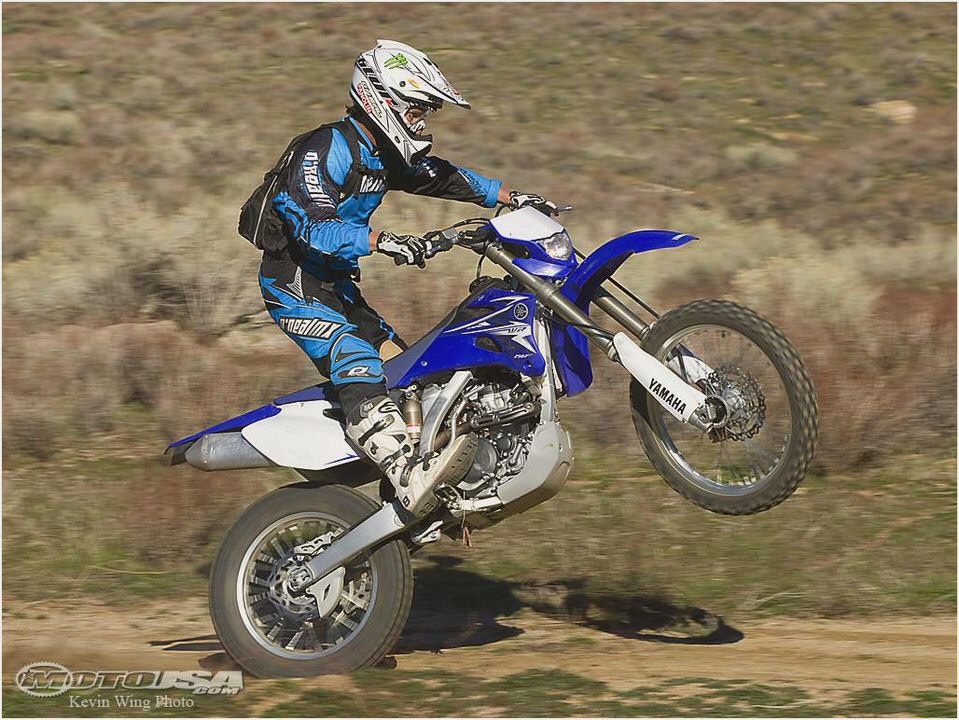

I spent a lot of enjoyable trail miles on the ’03 WRs, mostly the 450. I accumulated hundreds of southern Utah and central Colorado miles and thousands of California miles. The WR did it all without a hiccup, basically.
I like that a lot. I’m not so happy about the bike carrying its bulk a little high or how much it has to be stifled to pass a reasonable sound test. Being legal for a green sticker would make me a lot more of a fan. But one thing I cannot deny is the machine’s reliability.
It never hinted of letting me down. I’m not in this sport to push motorcycles, so that is a very good point in Yamaha’s favor, a point I happily vouch for! As far as sheer fun is concerned, the WR250F is a better buy.
It is nimble when compared with its bigger brother. I feel a bit too scrunched up on it, but it is a great choice for a smaller or lighter rider. It makes me wish I were one!
Karel Kramer/6’1″/200 lb/B rider Yamaha’s WR250F is a good trailbike. The suspension is very plush, which makes it easy to maneuver. The motor is a little weak, so it finds soft, steep hills hard to climb. On tighter trails, the bike felt very light, nimble and flickable. Gearing on the WR was a little off; on some hills third was too high and second was too low, and shifting under full throttle was very difficult.
The electric start was awesome. You don’t have to worry about stalling, because you just press the button and the Yamaha starts without any hesitation. On steep downhills, the bike gripped well and the brakes worked (except on the vertical hills Karel Kramer had us ride down–they were like being caught in an avalanche).
The ergonomics felt really comfortable; the bar and levers have a very nice touch. I’ve never ridden anything but motocross bikes, so the WR’s front felt a little heavy; I’m not sure if it is because of the headlight. Overall, I really like the feel of the WR250F and had fun for my first time on trails in the high desert.
Tyler Keefe/5’10″/165 lb/Intermediate MX The Yamaha WR250F is a little underpowered for my off-road taste, but I live in the high desert, where you can use plenty of power. It is too plugged up, so it requires effort to loft the front wheel over a log or rock. All you’d have to do is put an aftermarket muffler on, and I’m sure it would make a big difference.
Once you do get in the upper part of the powerband, it’s a fun bike to ride. The suspension is set up soft for off-road, but it actually feels good going over square edges and rocks. If you come to a drop-off or a big slap-down landing, it will feel soft.
I would gladly take a WR250F to play around on after a big rainstorm!The WR450F has the same problem as the 250. It needs help off the bottom to make it more fun in the tight sections. I tried to uncork the muffler, but that made it too lean and too loud. I did get up a huge sand hill on the first try! Once you get it going, it will take you up most anything you need to climb.
Suspension is quite good on the WR450F. It does not have headshake on long fast roads, nor does it bottom very easily. I had loads of fun on this bike, but I would make a few mods for my off-road needs.
Kris Keefer/5’11″/170 lb/Pro If you are looking for a dependable, fun trailbike for the West, the ’04 WR450F is the way to go. This bike has super-plush suspension that is exceptionally well balanced and provides a very comfortable ride on the trail. With electric start, a tucked-in kickstand, an oversize gas tank, cushy suspension and a low-decibel spark arrestor, the WR needs only a good aluminum handlebar and hand guards to be complete for off-road use.
However, if you plan to run this bike at race pace, you may need to make a few adjustments.I raced this bike at a local grand prix with some long, fast, sandy straights, which wreaked havoc on the choked-up motor. I’d recommend an FMF Q exhaust, which would provide the same low decibels and forestry-approved spark arrestor as well as some much-needed punch.
Removing the GYT-R quiet tip from the stock silencer would provide a little more hit, but keep in mind rejetting would be required and you would then have an annoyingly loud bike. The suspension worked like magic on the tight, choppy ridges, but when attempting sections of fast sand whoops, I found the suspension bottoming shortly after entering the whoops.
On the MX section of the course, the weight became a huge factor, and jumping the WR was a little scary, because an over- or underjump with such plush suspension would be a problem. Some stiffer springs and valving adjustments are needed to get the WR suited for race pace in the West. No doubt it would be fine for Eastern-style racing.For a good day of trail riding, I’d choose this bike over any MX machine because of the luxuries of the kickstand and electric start.
The suspension works great at a trail pace, and the low-decibel spark arrestor keeps rangers at bay. Overall, this is a great trailbike with the potential to be a competitive race machine. Too bad Yamaha didn’t put a little effort into shaving some weight.
Brad Daugherty/6′/160 lb/Intermediate
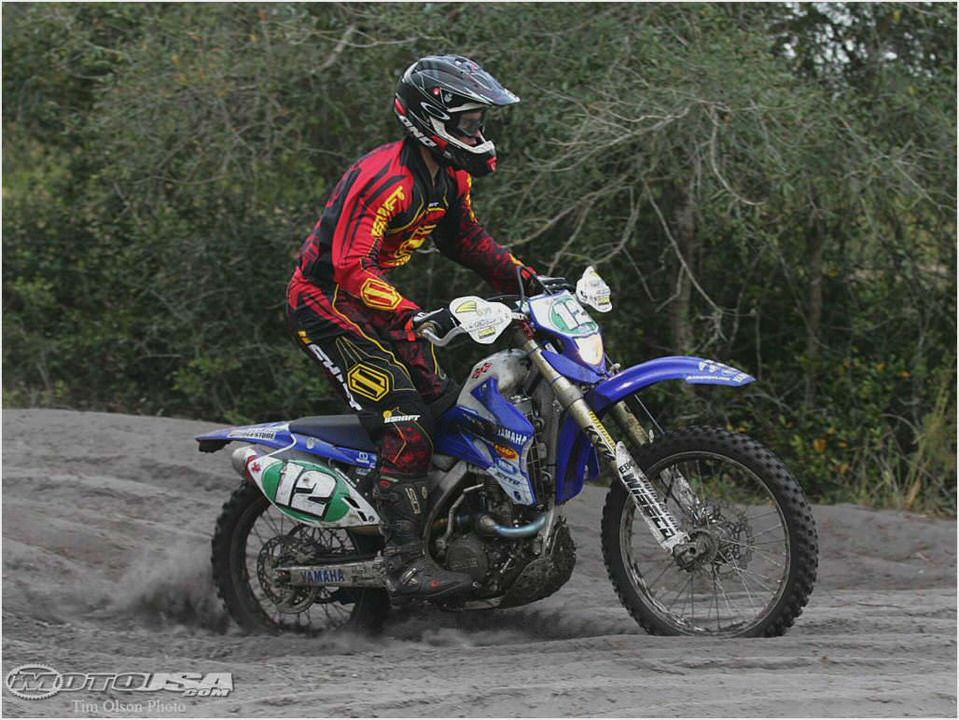
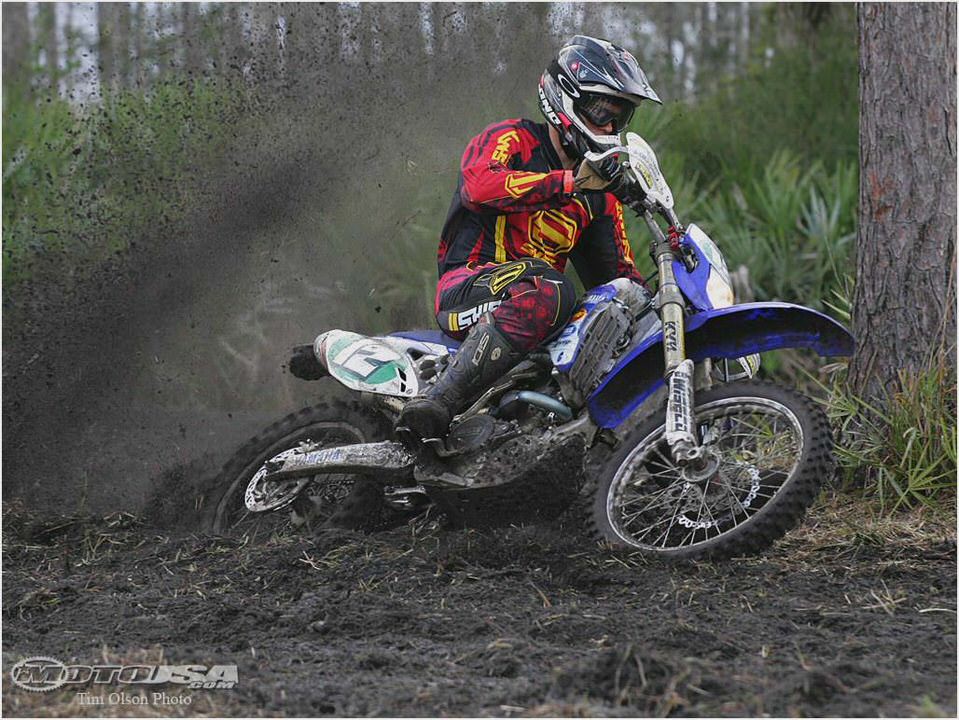
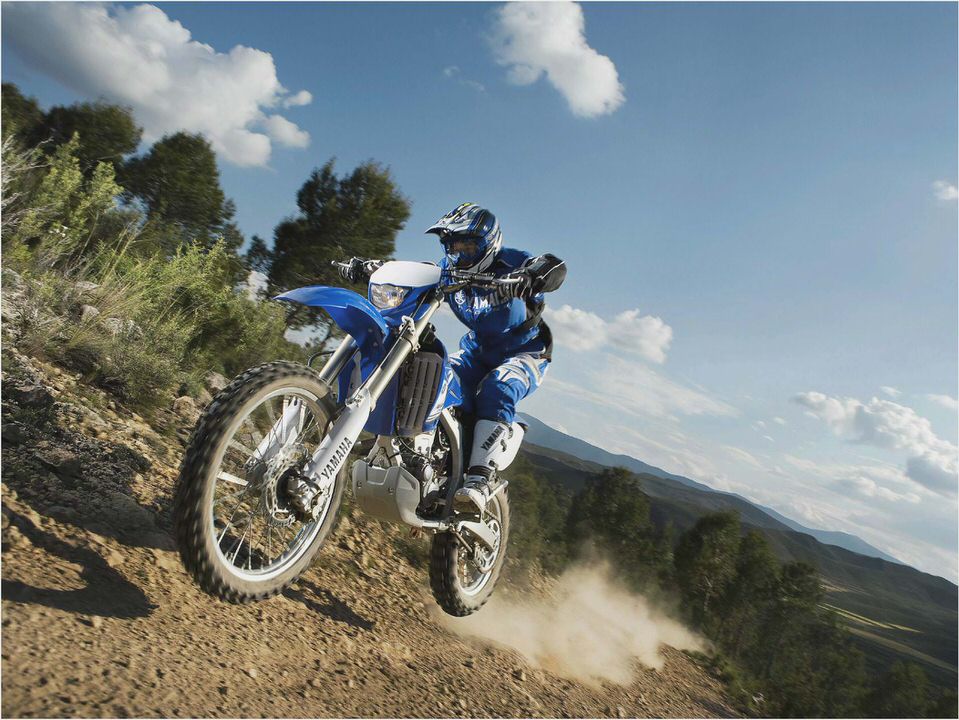
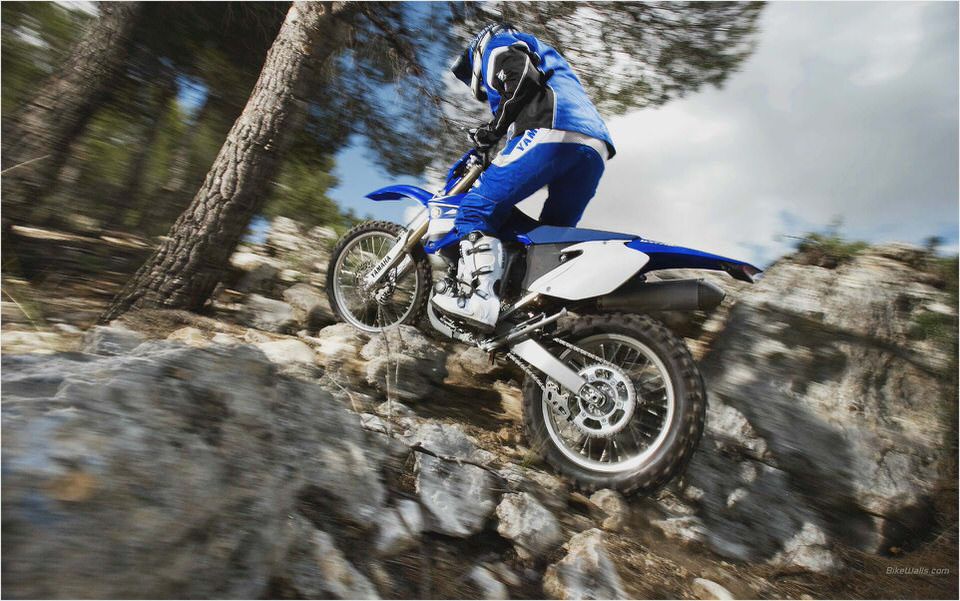
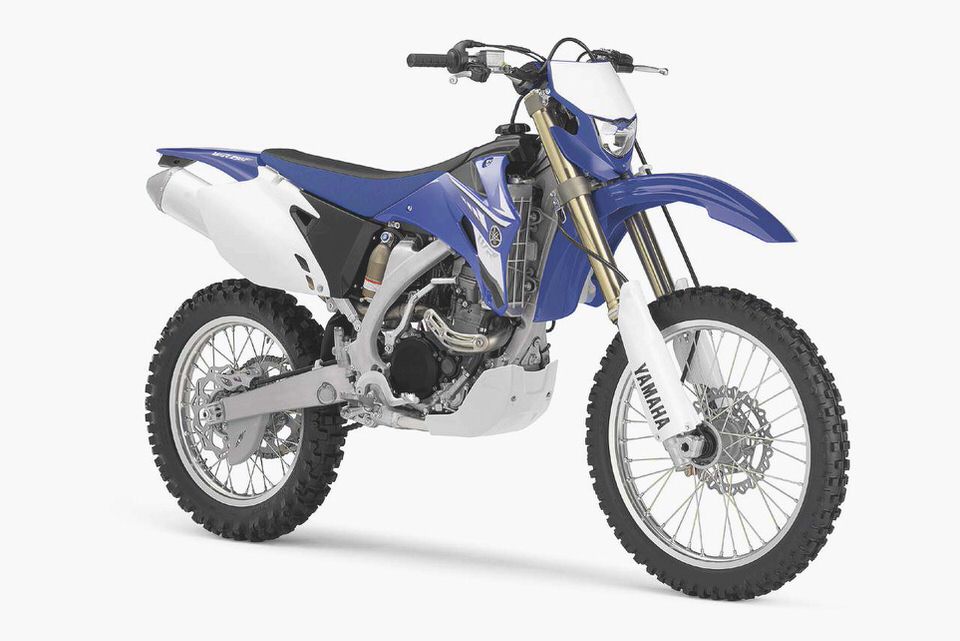

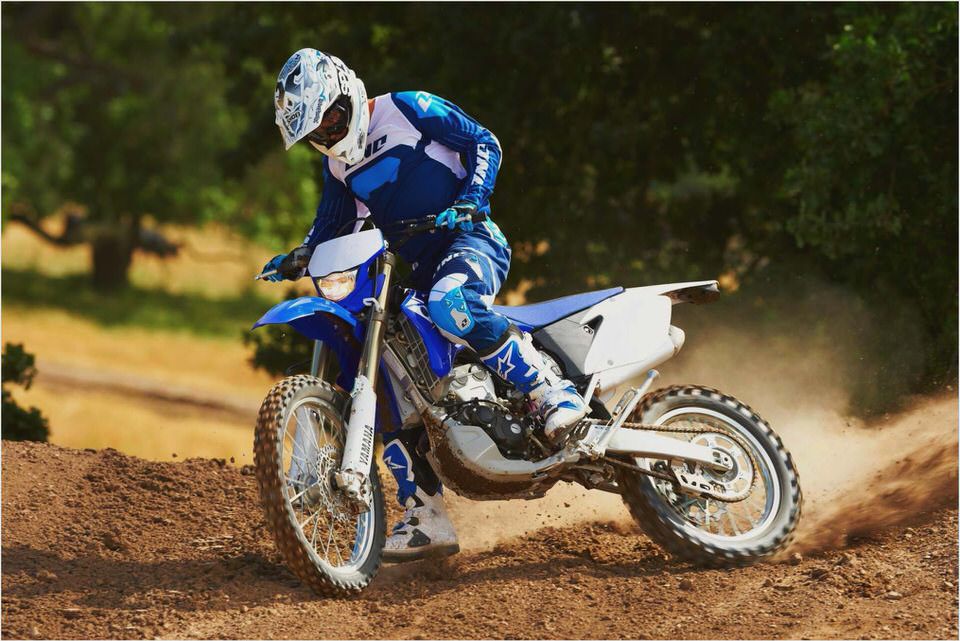
- Piaggio X10 125 2012
- YAMAHA XJ 900 S DIVERSION 1994 – 1998
- Specifications for a Yamaha SR 250 eHow
- Yamaha XV1600 Motorcycle Service Manual XV 1600 1999, 2000, 2001, 2002, 2003
- Yamaha MAXAM 3000
